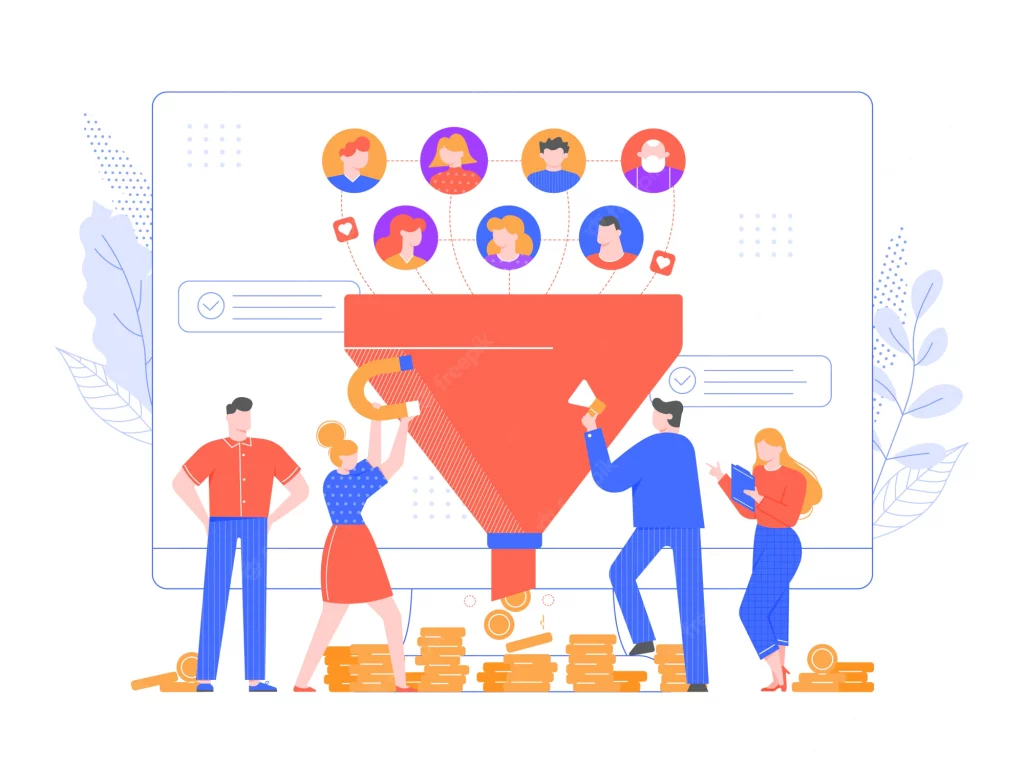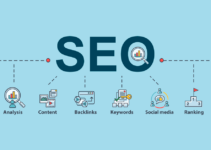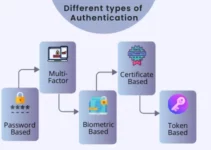In this article, we have featured a How to Build content marketing funnel Did you know that 87% of marketers develop content tailored to the various stages of the client journey?
When it comes to providing value to your audience and developing a more powerful content marketing plan for your company, having a solid understanding of which format works best at each step is a terrific tool to have.
In order to gain an understanding of how to properly map content to the stages of the funnel, we polled 350 marketers from all over the world and asked for their input.
The purpose of this survey was to build a thorough picture of how marketers utilize content along the funnel, including what channels are most effective, what metrics they use to assess results, and what channels perform best.
And it is with great pleasure that we provide the findings of the study to you today.
We have high hopes that our findings will help you identify weak spots in your content marketing funnel and provide you with fresh ideas for how to test and improve upon those weak spots.
What Is a Content Marketing Funnel?
The content marketing funnel is the perfect instrument for your company to use in order to communicate that value.
The content marketing funnel is a campaign that is based on the client and employs tailored educational material at all points throughout the buyer’s journey in order to attract your ideal prospective customers and lead them down the path toward completing a purchase.
It’s called a “funnel” because, if you visualize it in the shape of a “V,” your prospects enter at the broadest section or the top and progress along into a smaller route, where only consumers who are a good fit for your business go forward toward making a purchase.
The three primary stages of the marketing funnel are defined as follows by professionals in the field of marketing: the top of the funnel (TOFU) produces attention, the middle of the funnel (MOFU) generates leads, and the bottom of the funnel (BOFU) drives payments.
Because the user’s goals shift at each step, the content you produce will have to chase a different set of objectives, and the success of those objectives will be evaluated using a different set of metrics.
As a marketer, the most important question you have to answer is “what content will meet the informational needs of your potential consumers at a certain step?”
This is because the informational demands of your potential customers change at each stage. Continue reading to gain insight from the hundreds of different marketers that we questioned.
The Content Marketing Funnel Top 3 Stages
Imagine that the content marketing funnel is a map that you may follow to help you arrange your content marketing plan and develop an overall content strategy.
You will be able to build a content strategy that is more effective if you understand the kind of material that your customers desire and require at each level of the sales funnel. This is because you may generate particular kinds of content that will better educate your prospects, depending on where in the buyer’s journey they currently are (the research helps potential buyers perform, leading up to their purchase).
Your team will be able to develop content that the buyer genuinely wants to consume if they know what their consumers seek at each stage of the process.
Remember, as you continue on your own educational journey learning about the content marketing funnel, the names of the stages might change depending on who is presenting the information; however, they all have the same concepts in mind. Keep this in mind as you continue on your own educational journey.
In general, the three stages that make up the content marketing funnel are as follows:
The discovery phase, often known as top-of-the-funnel (TOFU) content, includes the following: Designed to attract potential customers who are in the initial research phase of looking for answers to problems they are experiencing in their lives. (This is what HubSpot refers to as the “awareness” phase.)
Middle-of-the-funnel (MOFU) material, often known as the consideration phase: Assists prospective customers in evaluating their available choices and determining which one offers the most promising means of resolving their issue. (This is also referred to by HubSpot as the “consideration” step.)
Purchase phase material sometimes referred to as bottom-of-the-funnel (BOFU) content: Assists potential customers in determining whether or not to make a purchase and from which firm to do so. (This step is referred to by HubSpot as the “decision” phase.)
Let’s break down each of these stages and investigate the exact sorts of content that you may provide that can assist your customers at each stage.
Top Of Funnel Content Tips
Carry out some research on the keywords. When it comes to TOF content, SEO is more critical than ever because customers are not yet familiar with your brand.
Conduct thorough keyword research and ensure that all of your on-page SEO needs are met in order to increase your online exposure and improve your chances of being found.
Reduce the amount of time you spend promoting yourself. It is OK to incorporate calls-to-action (CTAs) to other resources and free tools in the content of your TOF, but the primary purpose of this endeavor is to educate and earn trust. It’s possible to come off as insincere if you use your material to constantly promote your company’s goods and services.
Put some weight into the bog. Blogging is the most cost-effective solution here because of its low scalability requirements and low resource requirements. For assistance, in getting started, have a look at the blog post ideas and blog post templates that we have provided.
Also, Read:
Conclusion: Content Marketing Funnel
Start thinking of all the many ways in which your company may use content to communicate with its consumers now that you are familiar with all of the components of a content marketing funnel and how they function.
When everything is put together, the customer experience for each individual will seem distinct from the one before it.
It’s possible that someone will find your website through a post on your blog, stay in touch with you via your newsletter, and finally make a purchase from you after using a free trial of one of your goods. Another person may discover your company through a video, read one of your case studies, and ultimately choose to do business with you based on a recommendation from an existing client.



